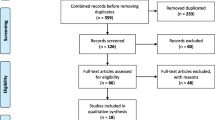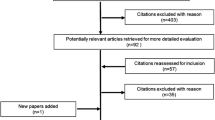Abstract
Chronic obstructive pulmonary disease (COPD) is a major cause of mortality and morbidity. Relatively few pharmacoeconomic studies have been conducted on this disease. This article reviews available information about the utilisation of healthcare resources and cost of care, and the cost or cost effectiveness of therapeutic interventions reported for this disease.
Burden-of-illness data indicate that hospital care, medications and oxygen therapy were the major cost drivers in these studies. Mean annual Medicare expenditures in the US were $US11 841 (2000 values) for patients with COPD compared with $US4901 for all covered patients. Utilisation was skewed; the most expensive 10% of the Medicare beneficiaries accounted for nearly 50% of total expenditures for this disease. Costs are associated with health status, age, physician specialty, geographic location and type of insurance coverage.
Six types of interventions were assessed in the literature - pharmacotherapy, oxygen therapy, home care, surgery, exercise and rehabilitation and health education. The studies used different analytic strategies (e.g. cost-minimisation and cost-effectiveness analyses) and even within the realm of cost-effectiveness analyses, no uniformity existed as to how outcome was measured. Patient severity was not always delineated, and the length of the follow-up period, while quite short, varied. Only 11 of the 34 evaluations were based on randomised controlled trials.
Cost-minimisation studies generally found no significant difference in the cost of antimicrobial treatment for first-line, second-line and third-line agents. Studies of bronchodilators indicated that ipratropium bromide alone or in combination with salbutamol (albuterol) was the preferred medication.
The major area for achieving cost savings is by reducing hospital utilisation. As the annual rate of hospitalisation is relatively low, large patient samples will be required to demonstrate an economic advantage for a new therapy. The major challenges will be financing such a study, and selecting an outcome measure that satisfies both clinical and economic conventions.



Similar content being viewed by others
References
National Institutes of Health, National Heart, Lung, and Blood Institute. Chronic Obstructive Pulmonary Disease. NIH Pub. No. 95–2020. Washington, D.C.: U.S. Government Printing office, 1995
Wilson L, Devine EB, So K. Direct medical costs of chronic obstructive pulmonary disease: chronic bronchitis and emphysema. Respir Med 2000; 94: 204–13
National Institute of Heart, Lung, and Blood Institute. Fact Book, Fiscal 1999 [online]. Available from URL: http://www.nhlbi.nih.gov/about/factpdf.htm [Accessed 2000Mar 8]
Murray CJL, Lopez AD. Mortality by cause for eight regions of the world: global burden of disease study. Lancet 1997; 349: 1269–76
Gross CP, Anderson GF, Powe NR. The relationship between funding by the National Institutes of Health and the burden of disease. N Engl J Med 1999; 340: 1881–7
Glasziou PP, Mitchell AS. Use of pharmacoeconomic data by regulatory authorities in quality of life and pharmacoeconomics in clinical trials. In: Spilker B, editor. Quality of life and pharmacoeconomics in clinical trials. 2nd ed. Philadelphia: Lippincott-Raven, 1996: 1141–7
U.S. Department of Labor, Bureau of Labor Statistics [online]. Available from URL: http://146.142.4.24/cgi-bin/surveymost [Accessed 2000 Nov 11]
Olson and Associates. Currency exchange rates [online]. Available from URL: http://www.oanda.com/convert/fxhistory [Accessed 2001 Jan 26]
Sullivan SD, Ramsey SD, Lee TA. The economic burden of COPD. Chest 2000; 117 (2 Suppl.): 5S-9S
Ward MM, Javitz HS, Smith WM, et al. Direct medical cost of chronic obstructive pulmonary disease in the U.S.A. Respir Med 2000; 94: 1123–9
Guest JF. The annual cost of chronic obstructive pulmonary disease to the UK’s national health service. Dis Manage Health Outcomes 1999; 5: 93–100
Rutten-van Molken MP, Postma MJ, Joore MA, et al. Current and future medical costs of asthma and chronic obstructive pulmonary disease in the Netherlands. Respir Med 1999; 93: 779–87
Jacobson L, Hertzman P, Lofdahl CG, et al. The economic impact of asthma and chronic obstructive pulmonary disease (COPD) in Sweden in 1980 and 1991. Respir Med 2000; 94 (3): 247–55
Grasso ME, Weller WE, Shaffer TJ, et al. Capitation, managed care, and chronic obstructive pulmonary disease. Am J Respir Crit Care Med 1998; 158: 133–8
Ireys HT, Anderson GF, Shaffer TJ, et al. Expenditures for care of children with chronic illnesses enrolled in the Washington State Medicaid Program, Fiscal Year 1993. Pediatrics 1997; 100: 197–204
Mapel DW, Hurley JS, Frost FJ, et al. Health care utilization in chronic obstructive pulmonary disease: a case-control study in a health maintenance organization. Arch Intern Med 2000; 160: 2653–8
Hilleman DE, Dewan N, Maleker M, et al. Pharmacoeconomic evaluation of COPD. Chest 2000; 118: 1278–85
Pannier R. Socio-economic causes and consequences of chronic bronchitis and emphysema: an overview. Eur J Respir Dis 1986; 69 Suppl. 146: 77–85
Strassels SA, Smith DH, Sullivan SD, et al. The cost of treating COPD in the United States. Chest 2001; 119: 344–52
Cydulka RK, McFadden ER, Emerman CL, et al. Patterns of hospitalization in elderly patients with asthma and chronic obstructive pulmonary disease. Am J Respir Crit Care Med 1997; 156: 1807–12
Connors AF, Dawson NV, Thomas C, et al. Outcomes following acute exacerbation of severe chronic obstructive lung disease. Am J Respir Crit Care Med 1996; 154: 959–67
Crockett AJ, Cranston JM, Moss JR, et al. An association between length of stay and co-morbidity in chronic airflow limitation. Int J Qual Health Care 2000; 12: 41–6
Niederman MS, McCombs JS, Unger AN, et al. Treatment cost of acute exacerbations of chronic bronchitis. Clin Ther 1999; 21: 576–91
Strauss MJ, Conrad D, LoGerfo JP, et al. Cost and outcome of care for patients with chronic obstructive lung disease: analysis by physician specialty. Med Care 1986; 24: 915–24
Rudolf M. The reality of drug use in COPD: the European perspective. Chest 2000; 117 (2 Suppl.): 29S-32S
Reguerio CR, Hamel MB, Davis RB, et al. A comparison of generalist and pulmonologist care for patients hospitalized with severe chronic obstructive pulmonary disease: resource intensity, hospital costs, and survival. Am J Med 1998; 105: 366–72
Hueston WJ, Mainous AG, Brauer N, et al. Evaluation and treatment of respiratory infections: does managed care make a difference? J Fam Pract 1997; 44: 572–7
Alkins SA, O’Malley P. Should health care systems pay for replacement therapy in patients with alpha-1 antitrypsin deficiency? A critical review and cost-effectiveness analysis. Chest 2000; 117: 875–80
Backhouse R, Shakespeare A, Hutton J. Economic evaluation of alternative antibiotic regimens in the management of acute exacerbations of chronic bronchitis. Br J Med Econ 1995; 8: 11–25
Bergemann R, Brandt A, Zoellner U, et al. Preventive treatment of chronic bronchitis: a meta-analysis of clinical trials with a bacterial extract (OM-85 BV) and a cost-effectiveness analysis. Monaldi Arch Chest Dis 1994; 49: 302–7
Collet JP, Shapiro S, Ernst P, et al. Effects of an immunostimulating agent on acute exacerbations and hospitalizations in patients with chronic obstructive pulmonary disease. Am J Respir Crit Care Med 1997; 156: 1719–24
Destache CJ, Dewan N, O’Donohue WJ, et al. Clinical and economic considerations in the treatment of acute exacerbations of chronic bronchitis. J Antimicrob Chemother 1999; 43 Suppl. A: 107–13
Friedman M, Serby CW, Menjoge SS, et al. Pharmacoeconomic evaluation of a combination of ipratropium plus albuterol compared with ipratropium alone and albuterol alone in COPD. Chest 1999; 115: 635–41
Grossman R, Mukherjee J, Vaughan D, et al. A 1-year community-based economic study of ciprofloxacin vs usual antibiotic treatment in acute exacerbations of chronic bronchitis: the Canadian health economic study. Chest 1998; 113: 131–41
Hay JW, Robin ED. Cost-effectiveness of alpha-1 antitrypsin replacement therapy in treatment of congenital chronic obstructive pulmonary disease. Am J Public Health 1991; 81: 427–33
Jurban A, Gross N, Ramsdelol J, et al. Comparative cost-effectiveness analysis of theophylline and ipratropium bromide in chronic obstructive pulmonary disease: a three-center study. Chest 1993; 103: 678–84
Orens DK, Kester L, Fergus LC, et al. Cost impact of metered dose inhalers vs. small volume nebulizers in hospitalized patients: the Cleveland clinic experience. Respir Care 1991; 136: 1099–104
Rosell A, Miravitlles M. DAFNE multicenter study in chronic obstructive pulmonary disease. Drugs Today 2000; 36 Suppl. E: 13–9
Sclar DA, Legg, RF, Skaer TL, et al. Ipratropium bromide in the management of chronic obstructive pulmonary disease: effect on health service expenditures. Clin Ther 1994; 16: 595–601
Summer W, Elston R, Tharpe L, et al. Aerosol bronchodilator delivery methods: relative impact on pulmonary function and cost of respiratory care. Arch Intern Med 1989; 149: 618–23
Torrance G, Walker V, Grossman R, et al. Economic evaluation of ciprofloxacin compared with usual antibacterial care for the treatment of acute exacerbations of chronic bronchitis in patients followed for 1 year. Pharmacoeconomics 1999; 16: 499–520
Wool C, Cerutti R, Gargagna N, et al. A cost-effectiveness of four different antibiotics in the treatment of acute exacerbations of chronic obstructive pulmonary disease. Br J Med Econ 1996; 159–68
Anon JM, Garcia de Lorenzo A, Zarazaga A, et al. Mechanical ventilation of patients on long-term oxygen therapy with acute exacerbations of chronic obstructive pulmonary disease: prognosis and cost-utility analysis. Intensive Care Med 1999; 25: 452–7
Heaney LG, McAllister D, MacMahon J. Cost minimisation analysis of provision of oxygen at home: are the drug tariff guidelines cost effective? BMJ 1999; 319: 19–23
Keenan SP, Gregor J, Sibbald WJ, et al. Noninvasive positive pressure ventilation in the severe, acute exacerbations of chronic obstructive pulmonary disease: more effective and less expensive. Crit Care Med 2000; 28: 2094–102
Nava S, Evangelisti I, Rampulla C, et al. Human and financial costs of noninvasive mechanical ventilation in patients affected by COPD and acute respiratory failure. Chest 1997; 111: 1631–8
Neri M, Fedi L, Spanevello A, et al. Savings obtained using an oxygen economizer device: a cost-minimisation analysis. Monaldi Arch Chest Dis 1999; 54: 311–4
Bergner M, Hudson LD, Conrad DA, et al. The cost and efficacy of home care for patients with chronic lung disease. Med Care 1988; 26: 566–79
Haggerty MC, Stockdale-Wooley R, Naur S. Respi-care: an innovative home care program for the patient with chronic obstructive pulmonary disease. Chest 1991; 100: 607–12
Roselle S, D’Amico FJ. The effect of home respiratory therapy on hospital readmission rates of patients with chronic obstructive pulmonary disease. Respir Care 1982; 27: 1194–9
Shepperd S, Harwood D, Gray A, et al. Randomised controlled trial comparing hospital at home care with inpatient hospital care. II: cost minimization analysis. BMJ 1998; 316: 1791–6
Al MJ, Koopmanschap MA, van Enckevort PJ, et al. Cost-effectiveness of lung transplantation in the Netherlands. Chest 1998; 113: 124–30
Ko CY, Waters PF. Lung volume reduction surgery: a cost and outcomes comparison of sternotomy versus thoracoscopy. Am Surg 1998; 764: 1010–3
Ramsey SD, Patrick DL, Albert RK, et al. The cost-effectiveness of lung transplantation: a pilot study. Chest 1995; 108: 1594–601
Goldstein RS, Gort EH, Guyatt GH, et al. Economic analysis of respiratory rehabilitation. Chest 1997; 112: 370–9
Guell R, Casan P, Belda J, et al. Long-term effects of outpatient rehabilitation of COPD: a randomized trial. Chest 2000; 117: 976–83
Parker L, Walker J. Effects of a pulmonary rehabilitation program on physiologic measures, quality of life, and resource utilization in a health maintenance organization setting. Respir Care 1998; 43: 177–82
Scherer YK, Schmeider LE. Pulmonary rehabilitation: is it cost effective? J N Y State Nurses Assoc 1998; 29: 16–20
Toevs CD, Kaplan RM, Atkins CJ. The costs and effects of behavioral programs in chronic obstructive pulmonary disease. Med Care 1984; 22: 1088–100
Wright RW, Larsen DF, Monie RG, et al. Benefits of a community-hospital pulmonary rehabilitation program. Respir Care 1983; 28: 1474–9
Tougaard L, Krone T, Sorknaes H, et al. Economic benefits of teaching patients with chronic obstructive pulmonary disease about their illness. Lancet 1992; 339: 1517–20
Weissert WG, Cready CM, Pauelak JE. The past and future of home- and community-based long term care. Milbank Memorial Fund Quarertly/Health and Society 1988; 32: 309–88
Petty, TL. COPD under surveillance: why is it poorly diagnosed? Advances for Managers of Respiratory Care 2000; 2: 30–2
Acknowledgements
This research was supported by Merck Research Laboratories.
Author information
Authors and Affiliations
Corresponding author
Rights and permissions
About this article
Cite this article
Ruchlin, H.S., Dasbach, E.J. An Economic Overview of Chronic Obstructive Pulmonary Disease. Pharmacoeconomics 19, 623–642 (2001). https://doi.org/10.2165/00019053-200119060-00002
Published:
Issue Date:
DOI: https://doi.org/10.2165/00019053-200119060-00002




